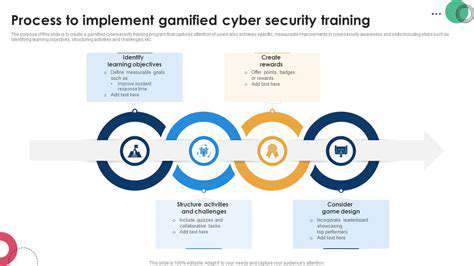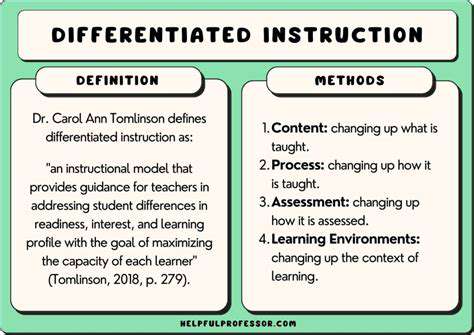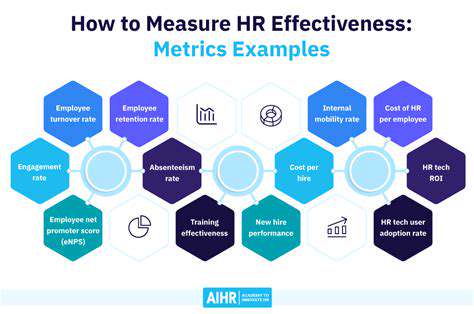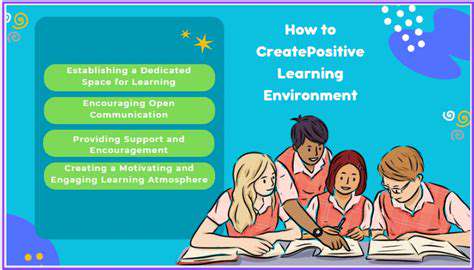AI Powered Essay Grading: Providing Instant Feedback
The rise of automated essay scoring systems is transforming the way educators assess student writing. These systems, powered by sophisticated algorithms and machine learning, offer a potential solution to the time constraints and subjective biases often associated with traditional human grading. This automated approach promises to provide more consistent and efficient feedback for students, enabling a more streamlined and data-driven approach to assessment.
This new technology aims to provide immediate feedback, enabling students to identify areas for improvement and learn from their mistakes more quickly. Ultimately, this acceleration of the feedback loop can enhance the learning experience and empower students to develop their writing skills more effectively.
Key Benefits of Automated Essay Scoring
One of the most significant advantages of automated essay scoring is its speed and efficiency. Automated systems can grade essays significantly faster than human graders, allowing educators to provide timely feedback to a large number of students. This efficiency is particularly valuable in large classrooms or when dealing with extensive assessment needs.
Furthermore, automated scoring systems can potentially reduce the human error inherent in subjective grading. By relying on predefined criteria and established benchmarks, these systems can provide more consistent and objective evaluations, minimizing the impact of personal bias.
Technological Advancements Driving Automated Essay Scoring
Recent advancements in natural language processing (NLP) and machine learning have significantly improved the accuracy and effectiveness of automated essay scoring systems. These technologies allow the systems to better understand the nuances of language and the complexities of written expression. This progress leads to more sophisticated assessments capable of evaluating not only grammatical accuracy but also critical thinking, argumentation, and overall writing style.
Challenges and Considerations
Despite the numerous benefits, automated essay scoring systems still face challenges. One key concern is the potential for these systems to overemphasize surface-level features of writing, such as grammar and mechanics, while neglecting more important aspects like argumentation and critical thinking. Educators need to carefully evaluate the specific criteria used by these systems to ensure that they align with desired learning outcomes.
Another crucial consideration is the potential for bias embedded in the training data used to develop these algorithms. If the training data reflects existing societal biases, the automated scoring system might perpetuate and amplify those biases in its evaluations, potentially leading to unfair or inaccurate assessments.
The Future of Automated Essay Scoring
The future of automated essay scoring holds immense potential for transforming education. Further research and development in NLP and machine learning will likely lead to even more sophisticated and accurate systems. The integration of human oversight and feedback will be critical to ensuring that these systems are used effectively and ethically to support learning and growth.
The evolution of these systems will likely see a more nuanced understanding of writing, potentially incorporating elements of creativity, originality, and critical thinking into the scoring criteria. This development will make automated essay scoring a more robust and comprehensive tool for assessing student writing.
Beyond the Rubric: Holistic Assessment Capabilities
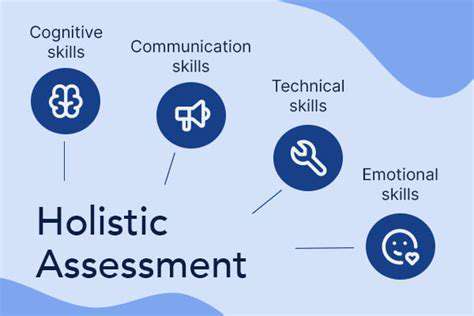
Beyond the Surface: Evaluating Deeper Learning
Traditional grading systems often focus on surface-level understanding, measured by rote memorization and procedural skills. However, a truly effective assessment goes beyond the rubric, seeking to understand the depth of student learning. This requires moving beyond simple answers to explore critical thinking, problem-solving, and the ability to apply knowledge in novel situations. We need to evaluate not only what students know, but also how they think and learn.
This holistic approach acknowledges that learning is a complex process, influenced by various factors beyond the immediate classroom. It encourages a more nuanced understanding of student development, recognizing that different students learn in different ways and at different paces. This approach fosters a growth mindset, where students are encouraged to embrace challenges and persevere through difficulties.
Fostering Critical Thinking and Problem Solving
Holistic assessment prioritizes critical thinking, encouraging students to analyze information, evaluate arguments, and form their own conclusions. It moves away from simply recalling facts towards applying knowledge to solve problems and address real-world scenarios. This allows students to develop essential skills for navigating complex situations.
By encouraging critical thinking, we equip students with the tools to become independent learners. They develop the ability to identify biases, assess evidence, and form reasoned judgments – skills vital for success in college and beyond.
Embracing Creativity and Innovation
A holistic assessment system recognizes and values creativity and innovation. It encourages students to think outside the box, explore new ideas, and develop innovative solutions to problems. This fosters a culture of risk-taking and experimentation, allowing students to develop their unique perspectives and talents.
By embracing creativity, we empower students to become active participants in shaping their learning experiences. This allows them to develop their own unique voice and approach to problem-solving. This dynamic approach to assessment is essential for preparing students for the challenges of the future.
Connecting Learning to Real-World Applications
Holistic assessment emphasizes connecting classroom learning to real-world applications. It encourages students to apply their knowledge and skills to solve practical problems, analyze contemporary issues, and engage in meaningful projects. This practical application of knowledge strengthens their understanding and makes learning more relevant and engaging.
This approach helps students understand how their learning can be applied in diverse contexts. It empowers them with the tools to become effective problem-solvers and informed citizens. Ultimately, this connection solidifies learning and fosters a deeper appreciation for the subject matter.
Encouraging Collaboration and Communication
Holistic assessment values collaboration and communication. It encourages students to work together, share ideas, and learn from one another. This collaborative learning environment fosters a sense of community and mutual respect. It develops crucial interpersonal skills that are essential for success in various aspects of life.
By encouraging communication, we empower students to articulate their ideas effectively and to engage in constructive dialogue. Active participation and sharing of ideas are fundamental components of a vibrant and engaging learning environment. This strengthens their ability to collaborate in teams and contribute meaningfully to group projects.
Assessing Self-Reflection and Metacognition
A significant aspect of holistic assessment involves assessing students' ability to reflect on their learning process. This involves encouraging self-evaluation, identifying strengths and weaknesses, and developing strategies for improvement. By fostering self-reflection, we empower students to become active agents of their own learning.
Metacognition, the ability to think about thinking, is also a key component of this approach. By encouraging students to analyze their own learning processes, we help them develop critical awareness of their strengths and weaknesses, and strategies to improve their understanding and performance. This process fosters self-directed learning and personal growth.
Effective communication is paramount in any successful interaction, and this is particularly true when dealing with sensitive or complex situations. Clear and concise language is crucial for ensuring that the message is accurately received and understood, minimizing the potential for misinterpretation. Promptness in responding to inquiries and requests is equally important, as it fosters a sense of respect and value for the recipient's time.
Addressing the Challenges and Ensuring Fairness

Addressing the Complexities of Global Supply Chains
Global supply chains, while offering significant economic advantages, are increasingly vulnerable to disruptions stemming from geopolitical instability, natural disasters, and unforeseen pandemics. These complexities necessitate a proactive and adaptable approach to risk management. Understanding and mitigating these risks is crucial for maintaining operational efficiency and ensuring business continuity in today's volatile world.
The interconnected nature of global supply chains means that disruptions in one region can have far-reaching consequences for businesses worldwide. This interconnectedness, while offering potential for efficiency, also amplifies vulnerabilities. Businesses must now prioritize resilience and diversification to safeguard their operations against disruptions.
Improving Transparency and Traceability
Enhanced transparency and traceability throughout the supply chain are essential for building trust and accountability. Implementing robust tracking systems and data sharing protocols allows stakeholders to monitor goods and materials from origin to final destination. This not only improves efficiency but also fosters greater trust among trading partners.
By providing real-time visibility into the movement of goods, transparency can significantly reduce the risk of counterfeiting and ensure compliance with regulations. This fosters a more ethical and sustainable supply chain ecosystem.
Investing in Sustainable Practices
Integrating sustainable practices into supply chain operations is no longer a choice but a necessity. Businesses must evaluate their environmental impact and implement strategies to reduce their carbon footprint. This includes sourcing materials responsibly, minimizing waste, and adopting eco-friendly transportation methods. These measures are not only beneficial for the environment but also contribute to long-term cost savings and enhanced brand reputation.
Enhancing Collaboration and Communication
Effective collaboration among stakeholders throughout the supply chain is vital for achieving optimal performance and resilience. Open communication channels, clear roles and responsibilities, and shared decision-making processes are critical for managing risks and opportunities effectively. Building strong relationships with suppliers, distributors, and customers is essential for navigating the complexities and uncertainties of the global marketplace.
Developing Contingency Plans
Proactive planning for potential disruptions is paramount to ensuring business continuity. Developing comprehensive contingency plans that address various scenarios, such as natural disasters, geopolitical instability, or pandemics, is crucial for maintaining operational efficiency and minimizing financial losses. These plans should outline alternative sourcing strategies, backup logistics routes, and communication protocols.
Implementing robust risk assessment frameworks and regularly reviewing contingency plans are essential to ensure their effectiveness and relevance in an ever-changing global landscape. Adaptability and flexibility are key elements for successfully navigating disruptions and maintaining supply chain stability.
